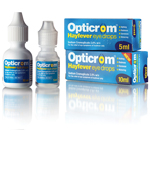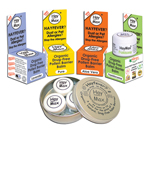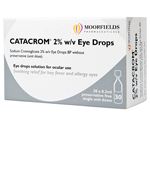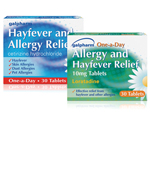Capitalise on the allergies boom
Pharmacy still leads the way in the growing hayfever market but GSL switches could cause shoppers to stray towards supermarkets
Pharmacy still leads the way in the growing hayfever market but GSL switches could cause shoppers to stray towards supermarkets Thanks to last summer being the warmest, driest and sunniest for five years, the hayfever market has received a welcome boost. According to market research company Kantar Worldpanel, its value increased by 23 per cent in 2013 to just over £61 million. It was particularly good news for pharmacies, which reported growth of 28 per cent – dwarfing the 17 per cent growth among supermarkets. As Britain basks in early spring sunshine, we can only hope this year will play host to plenty more good weather. But if pharmacy is to take full advantage of the allergies market, it must recognise the opportunities ahead – as well as the threats on the horizon. Strengths Pharmacies remain number one shopper destination The good news is that pharmacies dominate the hayfever market. In the year to February 2, they accounted for 52 per cent of all value sales, reports Kantar Worldpanel. This popularity shows no sign of declining. There were 820,000 new shoppers in the hayfever market last year, 310,000 of whom went to pharmacies. Shoppers also spent 4 per cent more per pack then they did in the previous year, a trend that has been driven by brands. Strong growth of nasal spray brands such as Beconase and Prevalin has proved particularly valuable, says Tim Nancholas, strategic insight director at Kantar Worldpanel. Overall, branded products were a strong point for the pharmacy sector. Sales in pharmacies grew by 32 per cent last year, compared with 24 per cent in supermarkets. But this trend didn't apply to all pharmacies: while market leader Boots grew more through brands than own-label, the opposite was true at Lloydspharmacy. Leyla Hannbeck, head of pharmacy services at the NPA, says sales of each category depend largely on advertising and customer base. "Branded hayfever products – for example, Benadryl and Clarityn – sell well due to large advertising and marketing campaigns," she explains. "But own-label products also sell well for customers requiring cheaper alternatives."
Weaknesses Short promotions
Hayfever is the most common type of allergy pharmacists come across. But allergies can be caused by a number of triggers such as pets and dust, so it's important to understand that sufferers don't just appear during the spring and summer months.
Staff should understand how to pick up on these other allergies, says Lynne Armstrong, director of marketing at Numark. "Identifying symptoms and environmental factors will help your staff understand the difference between hayfever caused by grass and tree pollen and [another] allergy," she explains.
Ms Armstrong believes it is equally important to apply this approach to promotions. "Do not limit your allergy promotions to one month in the spring or summer," she advises. "Feature allergy as a category for a minimum of six months and start early."
In fact, research suggests promotion is a weak point for pharmacies overall. Around four in 10 health shoppers are unaware of behind-the-counter pharmacy offerings, a shopper study found in 2010. GSK, manufacturer of the Piri range, recommends putting dummy packs of P medicines on open display.
"[They are] an effective way of driving awareness and allowing the shopper to browse the whole range before making a purchase decision, with the pharmacist's approval that the P product is appropriate," says Hannah Allchin, allergy brand manager at GSK.
Opportunities Product advice and PGDsPharmacists are often told to capitalise on their advice role, but this is particularly true for the allergy category. According to a GSK survey of 2,312 people in 2012, nearly 50 per cent of consumers are unhappy with their current treatments and are willing to try something new. Coupled with findings that 40 per cent of shoppers are influenced by recommendations from pharmacy teams, it is easy to see where the opportunities lie. Switching customers to a better brand or recommending an additional product that alleviates their symptoms can have the added benefit of building loyalty.
"Because pharmacists can offer immediate advice and support to patients, customers will often return for further advice throughout the hayfever season," says the NPA's Ms Hannbeck. Another way of securing loyal customers is by offering easy access to prescription medication. For example, pharmacists are now able to supply Dymista – a nasal spray formulation of fluticasone propionate and azelastine hydrochloride – through a free patient group direction on pharmacypgd.co.uk.
Niche products can also build a following. If you're catering for children, syrup and tablets are the two most popular formats, says GSK's Ms Allchin. Meanwhile, Max Wiseberg, founder of pollen barrier balm HayMax, says the drug-free OTC market is "growing each year" and may be worth considering in stock choices.
Pharmacy may be dominant in the hayfever market for now, but its position is being threatened by the increasing number of products switching from pharmacy-only to GSL classification. Numark's Ms Armstrong believes this will make it easier for supermarkets to start stealing share from pharmacies. On the face of it, it is easy to see why consumers might be tempted to go elsewhere – the average price per pack is £1.89 in supermarkets, compared with £3.44 in pharmacies.
However, this price difference is largely down to pharmacies sellling larger pack sizes, which is actually a strength of the sector. "Stocking a 60s pack will keep your customers coming back to you, as they may be less likely to pick up the smaller pack sizes from [supermarkets]," says Ms Armstrong.
Despite the switches to GSL, she stresses that pharmacists should continue to make the most of the pharmacy-only products they have. "It is important to remember that the value is in P medicines, so ensure your customers are buying the right product and pack size to meet their needs," she says.
Ultimately, Ms Armstrong advises pharmacists to be "single-minded" about maintaining share in this strong category. By ensuring you are fully stocked and promoting the category now, you can remind your customers to be prepared for the hayfever season, reinforcing the message of treating symptoms as soon as they start.
*Unless specified otherwise, all quoted data is provided by Kantar Worldpanel (value sales, 52 weeks ending January 5, 2014)
 A patient who is allergic to penicillin comes in with a prescription for cephalosporins.
Should they be worried about taking the prescription?
Leyla Hannbeck, head of pharmacy services, NPA
Cephalosporin antibiotics and other beta-lactam antibiotics should be avoided in patients who are allergic or have a history of being allergic to penicillins as there is a risk of cross-sensitivity. The main side effect of cephalosporins is hypersensitivity and some patients who are sensitive to penicillins will also be allergic to cephalosporins.
Cephalosporins should only be prescribed if considered essential by the prescriber. If the patient has a history of a minor rash or a rash that occurs 72 hours following administration of a penicillin, this might not be considered as a penicillin allergy.
A patient who is allergic to penicillin comes in with a prescription for cephalosporins.
Should they be worried about taking the prescription?
Leyla Hannbeck, head of pharmacy services, NPA
Cephalosporin antibiotics and other beta-lactam antibiotics should be avoided in patients who are allergic or have a history of being allergic to penicillins as there is a risk of cross-sensitivity. The main side effect of cephalosporins is hypersensitivity and some patients who are sensitive to penicillins will also be allergic to cephalosporins.
Cephalosporins should only be prescribed if considered essential by the prescriber. If the patient has a history of a minor rash or a rash that occurs 72 hours following administration of a penicillin, this might not be considered as a penicillin allergy.
The use of penicillins and cephalosporins should not be restricted in these patients and the decision of which antibiotic to prescribe would be up to the prescriber. The prescriber should check the latest prescribing advice and local prescribing guidelines when considering the use of cephalosporin antibiotics in penicillin-allergic patients.
 Everyone knows the common symptoms of hayfever: a runny nose, sneezing and itchy, sore eyes. But Max Wiseberg (pictured), an expert on airborne allergies and founder of HayMax allergen barrier balm, says it is important to bear in mind the other symptoms. "It is less well known that it can also cause itchy throat, ears and roof of the mouth, loss of smell, face pain, sweats and headache, as well as wheezing and breathlessness, particularly in asthma sufferers," he explains.
Antihistamines are usually the first port of call for treatment, but he advises pharmacists to make customers aware of the side effects. "The non-sedating versions are best, although these can still cause drowsiness. People should be warned about driving or operating machinery while taking them," Mr Wiseberg stresses. Steroid nasal sprays are also helpful, he says, and should be started before symptoms set in. "However, as they work even after the start of the reaction, advise your customer to keep taking them – even on days when they are not reacting," he warns.
Everyone knows the common symptoms of hayfever: a runny nose, sneezing and itchy, sore eyes. But Max Wiseberg (pictured), an expert on airborne allergies and founder of HayMax allergen barrier balm, says it is important to bear in mind the other symptoms. "It is less well known that it can also cause itchy throat, ears and roof of the mouth, loss of smell, face pain, sweats and headache, as well as wheezing and breathlessness, particularly in asthma sufferers," he explains.
Antihistamines are usually the first port of call for treatment, but he advises pharmacists to make customers aware of the side effects. "The non-sedating versions are best, although these can still cause drowsiness. People should be warned about driving or operating machinery while taking them," Mr Wiseberg stresses. Steroid nasal sprays are also helpful, he says, and should be started before symptoms set in. "However, as they work even after the start of the reaction, advise your customer to keep taking them – even on days when they are not reacting," he warns.
For those who prefer a drug-free option, Mr Wiseberg says organic pollen barrier balms, acupressure bands and nasal washes can be a "useful addition" to the allergy range. He believes they can be particularly helpful for children and, with the exception of acupuncture, are suitable for pregnant and breastfeeding women.

 Opticrom
Opticrom
Opticrom Hayfever Eye Drops help combat seasonal allergic conjunctivitis. The active ingredient, sodium cromoglicate, works by reducing allergic responses, which helps fight against symptoms such as watery, inflamed and itchy eyes. Manufacturer Sanofi says the product can start to soothe symptoms in as little as two minutes. The drops are suitable for adults and children aged six and over and come in 5ml and 10ml packs. A 5ml pack retails at £4.70.
Sanofi, 01202 780 558, opticrom.co.uk

 HayMax
HayMax
HayMax is an organic barrier balm designed to prevent the symptoms of airborne allergies. A small amount of the drug-free product can be applied around the nostrils to trap irritants such as pollen, dust and pet allergens before they can enter the body and cause an allergic reaction. The balm is suitable for use by children and pregnant and breastfeeding women. It is available in four different varieties: pure, frankincense, lavender and aloe vera. One 5ml pot of HayMax retails at £6.99; a triple pack is priced at £13.98.
HayMax, 01525 406 600, haymax.biz

 Catacrom
Catacrom
Catacrom eye drops are designed to treat and prevent the symptoms of allergic conjunctivitis. The pharmacy-only eye drops contain sodium cromoglicate and are free from preservatives to avoid any exacerbation of symptoms. Manufacturer Moorfields Pharmaceuticals says the drops have "minimal side effects" and are suitable for children and contact-lens wearers. The drops retail at £8.99 per pack of 30 0.3ml doses.
Moorfields Pharmaceuticals, 020 7684 9090, moorfieldspharmaceuticals.co.uk

 Galpharm
Galpharm
Galpharm says its 10mg cetirizine and loratadine tablets are "an effective, trustworthy and affordable alternative" to well-known allergy relief brands. This season, the company has launched 30-tablet pack sizes in response to its market research, which indicated that customers value a larger size. The new packs of Galpharm Hayfever and Allergy Relief tablets and Galpharm One-a-Day Allergy Relief tablets come at a recommended retail price of £3.99. Galpharm will continue to sell its hayfever and allergy products in smaller pack sizes of 7 and 14 tablets.
Galpharm, 01226 779911, perrigouk.com




